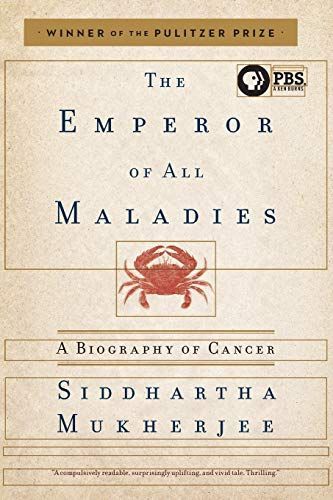
The Emperor of All Maladies A Biography of Cancer
An assessment of cancer addresses both the courageous battles against the disease and the misperceptions and hubris that have compromised modern understandings, providing coverage of such topics as ancient-world surgeries and the development of present-day treatments. Reprint. Best-selling winner of the Pulitzer Prize. Includes reading-group guide.
Reviews
Gigi V@barksandvino
Laura Mauler@blueskygreenstrees
charisa@charisa
Gavin@gl
Matthew Serrano@mserrano
Hazal Özlem@sirunmanug
Flavia Louise@flaviaaalouise
Ashley Zahalan@ashleyz
ANDREW BRYK@andrewbryk
Melody Izard@mizard
Omar@omareduardo
Jade Flynn@jadeflynn
Jeni Enjaian@jenienjaian
Phil James@philjames
Michael Hessling@cherrypj
Megan snyder@megansnyder
Tim Oliver@Tim_Oli
Stephen Schenkenberg@schenkenberg
Udit Desai@uydesai
anjali@anjalislibrary
Olivia@olivia11235813
Helen Bright@lemonista
Timeo Williams@timeowilliams
Richu A Kuttikattu@richuak
Highlights
Manasi Gajjalapurna@manasigajjalapurna
Manasi Gajjalapurna@manasigajjalapurna
Manasi Gajjalapurna@manasigajjalapurna